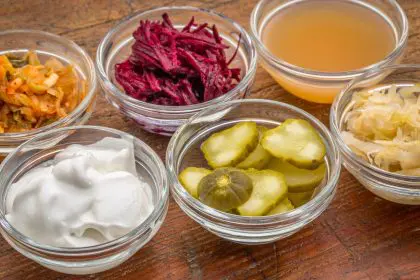Creating treats for children with diabetes requires reimagining traditional recipes without sacrificing flavor. While conventional cookies often contain high amounts of sugar and refined carbohydrates, these thoughtfully crafted alternatives use smart substitutions to align with diabetic dietary needs while still delivering the magic of homemade cookies that every child deserves to experience.
These recipes focus on natural sweeteners, whole grains, and nutrient-dense ingredients that provide satisfying treats children can safely enjoy. Each has been designed to help maintain stable blood sugar levels while preserving the simple joy that comes from biting into a freshly baked cookie.
The oatmeal almond combination that delivers steady energy
These hearty cookies blend the wholesome goodness of oats with the rich flavor of almonds. The oats provide consistent energy release throughout the day, while almonds contribute protein and healthy fats that help prevent blood sugar spikes.
1 cup rolled oats 1/2 cup almond flour 1/4 cup unsweetened applesauce 2 tablespoons stevia or erythritol 1 teaspoon vanilla extract 1/4 teaspoon cinnamon
Heat oven to 350°F. Mix ingredients thoroughly in a bowl until well combined. Scoop small portions onto a parchment-lined baking tray and flatten slightly with your palm. Bake 12-15 minutes until the edges turn golden brown. Allow to cool completely before serving, as the texture improves as they rest.
The natural sweetness from applesauce reduces the need for added sweeteners while keeping the cookies moist. Children particularly enjoy the cinnamon aroma that fills the kitchen as these bake, creating anticipation for the warm, nurturing treat to come.
Protein-packed peanut butter cookies with a nutritional boost
This reimagined version of classic peanut butter cookies incorporates chia seeds for added nutrition and an interesting texture that kids find fascinating. The protein content helps moderate glucose absorption while keeping young bakers satisfied longer.
1/2 cup natural unsweetened peanut butter 1/4 cup erythritol or monk fruit sweetener 1 egg 1 tablespoon chia seeds
Heat oven to 350°F. Combine all ingredients in a bowl until well mixed. Form small balls with your hands, place on a lined baking tray, and create the traditional crisscross pattern with a fork. Bake 10-12 minutes until set but not overly browned.
These cookies retain the nostalgic flavor profile children expect from peanut butter cookies while offering substantial nutritional benefits. The added chia seeds provide omega-3 fatty acids and fiber that support overall health beyond blood sugar management.
Low-carb chocolate chip cookies that satisfy sweet cravings
These coconut flour-based cookies address chocolate cravings while keeping carbohydrates in check. The moderate amount of dark chocolate provides the flavor children want without excessive sugar content.
1/4 cup coconut flour 2 tablespoons unsweetened dark chocolate chips 1/4 cup unsalted butter or coconut oil, melted 1 egg 1/4 cup erythritol 1 teaspoon vanilla extract
Heat oven to 350°F. Mix coconut flour, erythritol, and melted butter in a bowl. Add egg and vanilla, stirring until a cohesive dough forms. Fold in chocolate chips gently. Shape into small balls, flatten on parchment-lined tray, and bake 10-12 minutes until the edges firm up.
Coconut flour creates a different texture than wheat flour, so these cookies tend to be slightly more dense. This density works in favor of blood sugar management, as it slows digestion and prevents rapid glucose elevation after eating.
Seasonal pumpkin spice treats with natural sweetness
These soft, aromatic cookies provide natural sweetness and vital nutrients from pumpkin. The warming spices make them perfect for fall gatherings or holiday celebrations when children with diabetes might otherwise feel excluded from traditional treats.
1/2 cup unsweetened canned pumpkin 1/4 cup almond flour 1/4 cup erythritol or monk fruit sweetener 1/4 teaspoon each nutmeg and cinnamon 1 egg
Heat oven to 350°F. Mix ingredients until smooth and well combined. Spoon small portions onto a lined baking tray, leaving space between each cookie. Bake 12-15 minutes until firm to the touch. These cookies will remain somewhat soft even when fully baked.
The natural beta-carotene in pumpkin adds nutritional value while contributing to the appealing orange color that makes these cookies visually exciting for young eaters. Their slightly cake-like texture makes them gentle on young teeth while delivering satisfying flavor.
Bright citrus cookies that refresh the palate
These zesty lemon cookies offer a bright, citrusy flavor profile that provides a welcome change from heavier options. Their light taste makes them perfect for warm weather or as a refreshing after-school snack.
1 cup almond flour 1/4 cup erythritol 1 teaspoon lemon zest 1 egg 2 tablespoons unsalted butter, melted 1/2 teaspoon vanilla extract
Heat oven to 350°F. Combine dry ingredients with fresh lemon zest in a large bowl. Add wet ingredients and mix thoroughly to form a cohesive dough. Shape into small balls, place on lined baking sheet, and flatten gently. Bake 10-12 minutes until edges turn golden but centers remain soft.
The bright citrus notes in these cookies provide sensory excitement that helps children feel they’re enjoying something special rather than a medical necessity. The almond flour base also adds protein and healthy fats that support overall development.
Essential techniques for successful diabetic-friendly baking
Crafting cookies that taste delicious while maintaining stable blood sugar requires attention to several key factors. These expert-approved strategies help ensure both culinary success and appropriate nutritional profiles.
Choosing the right sweeteners for optimal results
Natural sweeteners like stevia, erythritol, and monk fruit provide the best options for diabetic baking. These alternatives offer sweetness without significantly affecting blood glucose levels, but each behaves differently when baked.
Stevia requires much less volume than sugar, so recipes must be adjusted carefully to avoid overpowering bitterness. Erythritol works exceptionally well for creating crispy textures but may create a slight cooling sensation when eaten. Monk fruit blends seamlessly with other ingredients and maintains traditional cookie texture better than some alternatives.
Always measure alternative sweeteners precisely, as over-sweetening cannot be corrected once the dough is mixed. When introducing children to these natural sweeteners, start with small batches to determine preferences before preparing larger quantities.
Why portion control transforms diabetic baking
Maintaining consistent portion sizes helps families manage carbohydrate intake effectively while still enjoying homemade treats. Using a small cookie scoop or measuring tablespoon ensures uniform portions that make carbohydrate counting more reliable.
Making cookies smaller than traditional sizes allows children to enjoy the experience of eating a whole cookie rather than being limited to partial portions. Creating clear dividing lines in dough before baking also helps establish visual portion guidelines for young eaters still learning about their dietary needs.
Storing cookies in pre-portioned containers makes grab-and-go snacking safer for busy families, while keeping detailed records of carbohydrate counts per cookie empowers older children to manage their own intake with increasing independence.
How fiber enhances diabetic cookie recipes
Adding fiber helps slow sugar absorption and improves the nutritional profile of treats. Incorporating ground flaxseed into batters provides omega-3 fatty acids along with soluble fiber that moderates glucose release during digestion.
Using whole grain flours when possible increases both fiber content and nutrient density compared to refined alternatives. Adding nuts and seeds contributes natural fiber along with protein and healthy fats that further stabilize blood sugar response after eating.
Some experienced bakers incorporate small amounts of psyllium husk for additional fiber and improved texture. Combining different fiber sources often delivers better results than relying on a single option, creating more appealing cookies that still meet health requirements.
The ingredients that make all the difference
The quality of ingredients significantly impacts both nutrition and flavor in diabetic-friendly cookies. Selecting fresh, high-quality nuts and seeds ensures maximum nutrient content and better taste. Using pure vanilla extract rather than artificial flavoring provides more complex flavor without unwanted additives.
Choosing unsweetened natural nut butters eliminates hidden sugars while delivering more satisfying flavor. Fresh spices create more aromatic cookies that feel special despite containing less sugar than conventional recipes.
Carefully reading labels helps avoid hidden sugars in seemingly innocent ingredients. This attention to detail not only improves the health profile of cookies but also teaches children valuable skills for managing their condition throughout life.
Temperature and timing considerations for perfect results
Proper baking temperature and timing help maintain texture and nutritional integrity. Using an oven thermometer ensures accuracy regardless of oven age or calibration status. Watching cookies carefully near the end of baking time prevents overcooking, which can make sugar-free cookies excessively dry.
Allowing proper cooling time allows textures to develop fully, particularly important with alternative flours that behave differently than wheat. Adjusting baking time for smaller portion sizes prevents overcooking these petite treats, while considering humidity effects on baking time helps achieve consistent results year-round.
Creating positive experiences beyond the recipe
Making diabetic-friendly cookies should be an enjoyable experience that helps children develop healthy relationships with food despite their medical condition. Involving children in the baking process teaches them about ingredient choices while giving them agency in their treatment.
Using baking sessions to educate about healthy ingredients builds knowledge that serves children throughout life. Creating special occasions for baking helps normalize the experience of having dietary restrictions, while sharing treats with friends and family demonstrates that diabetic-friendly can mean delicious for everyone.
Celebrating successful recipe adaptations encourages children to view their condition as manageable rather than limiting. This positive framing helps build resilience and self-efficacy around food choices from an early age.
Building traditions around health-conscious baking
Baking for children with diabetes doesn’t require sacrificing joy or flavor. These recipes demonstrate that thoughtful alternatives create delicious treats aligned with dietary needs while bringing happiness to young cookie lovers who deserve the same culinary experiences as their peers.
By focusing on wholesome ingredients, appropriate portion sizes, and careful preparation, these cookies provide satisfying treats both parents and children can feel good about. The key lies in understanding diabetic-friendly baking principles and applying them consistently to create successful results that become beloved family favorites.
Remember that individual dietary needs vary based on age, activity level, and specific medical guidance, so always consult with healthcare providers about particular restrictions. With practice and attention to detail, creating delicious diabetic-friendly cookies becomes second nature, opening a world of sweet possibilities for children navigating diabetes while still experiencing the simple joy of a homemade cookie.















